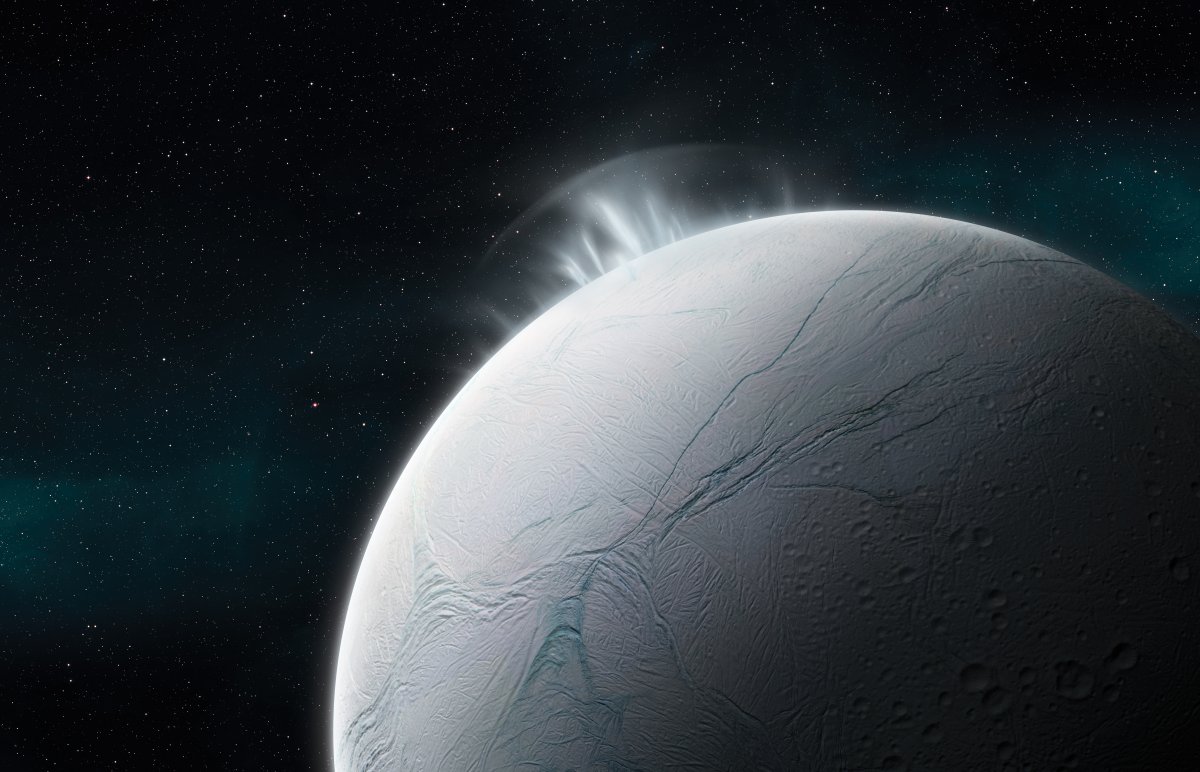NASA scientists believe that the ice moon Enceladus, which orbits Saturn, could hold all the basic building blocks of life and might be our best bet at finding living organisms beyond Earth.

Research has already revealed that Enceladus has water, carbon dioxide and methane present in the giant plumes of vapour that spew from its south pole. But a study published Thursday in Nature Astronomy found “strong confirmation” that Enceladus is also home to hydrogen cyanide.
Though this molecule is a poisonous gas to humans, it is also “key to the origin of life,” NASA wrote in a press release.
The findings came from an analysis of data collected by the Cassini spacecraft, which orbited Saturn for 13 years, gathering and transmitting data about the outer solar system and Saturn’s 146 moons before it was decommissioned and plunged into the surface of the gas giant in 2017.

Since then, scientists have been particularly interested in Cassini’s data on Enceladus. The findings published Thursday reveal that hidden below the moon’s icy shell lives an ocean that holds a “powerful source of chemical energy.”
“Our work provides further evidence that Enceladus is host to some of the most important molecules for both creating the building blocks of life and for sustaining that life through metabolic reactions,” said lead author Jonah Peter, a doctoral student at Harvard University working at NASA’s Jet Propulsion Laboratory.
“Not only does Enceladus seem to meet the basic requirements for habitability, we now have an idea about how complex biomolecules could form there, and what sort of chemical pathways might be involved.”
On Earth, a number of organic compounds were needed to kick-start life. Hydrogen cyanide is one of those critical organic compounds, and Peter explains that this molecule is the “starting point for most theories on the origin of life.”
The linear structure of a hydrogen cyanide molecule, which is made up of hydrogen, carbon and nitrogen atoms lined up in a row, allows it to be stacked together in a variety of ways to create different amino acids. All living things need amino acids to create proteins and sustain bodily functions.
In the study, NASA scientists even refer to hydrogen cyanide as a “Swiss army knife of amino acid precursors.”
Beyond hydrogen cyanide, the researchers found an array of oxidized organic compounds, representing a large amount of chemical energy that microbes could use to feed on and sustain themselves in Enceladus’s subsurface ocean.
“The more energy available, the more likely that life might proliferate and be sustained,” NASA writes.
In 2017, scientists discovered that the plumes coming from Enceladus’s ocean contained methane, suggesting that methanogenesis, a metabolic process that produces methane, was taking place.
As study co-author Kevin Hand explains: “If methanogenesis is like a small watch battery, in terms of energy, then our results suggest the ocean of Enceladus might offer something more akin to a car battery, capable of providing a large amount of energy to any life that might be present.”
While these findings certainly have NASA scientists excited, we are still a long way from answering whether life really exists on Enceladus.
What the research does demonstrate is that Cassini’s data, gathered over five years ago, is a gift that keeps on giving.
“While Cassini’s mission has ended, its observations continue to provide us with new insights about Saturn and its moons – including the enigmatic Enceladus,” study co-author Tom Nordheim said.
The lessons learned during Cassini’s mission have helped scientists hone their attention on the exploration of “ocean worlds” like Enceladus that could support life.
In October 2024, NASA plans to launch the Europa Clipper mission, which would investigate Jupiter’s icy moons to see if they, too, could hold the building blocks of life.









Comments